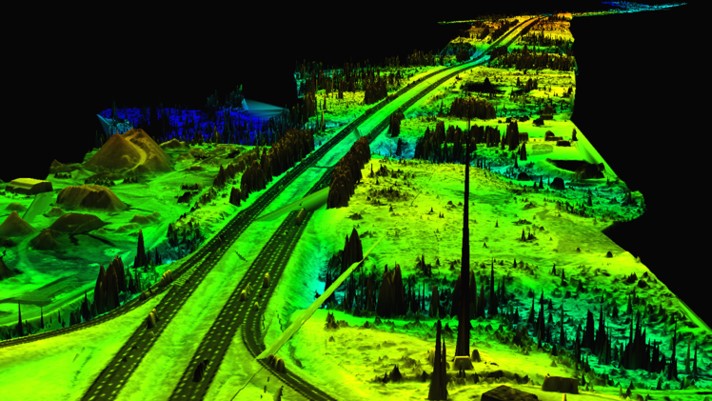As with every aspect of life, technology is changing the shape of border security. Assistant Chief Patrick Stewart of the US Border Patrol told Defence Connect that geospatial imagery and mobile technology has changed the strategic and operational nature of his job and the security of the US.
To continue reading the rest of this article, please log in.
Create free account to get unlimited news articles and more!
For more than 15 years, Washington-based Assistant Chief Patrick Stewart has built a career supporting homeland security missions. Joining the Border Patrol the day following the September 11 attacks, he is currently serving as the Branch Chief of the Geospatial Information Systems (GIS) program for the US Border Patrol and the program lead for US Customs and Border Protection.
Stewart is in Australia addressing the Australian Security Summit on the importance of geospatial information systems in maintaining border integrity and helping ensure that border patrol officers and customs operators can do their jobs safely, efficiently and effectively in an increasingly contested environment.
Like Australia's border force and customs service, their US counterparts operate in a variety of environments, ranging from mountainous, alpine areas along the Canadian border, to the Mesas of Texas and southern California, with responsibility for the maritime areas of the US and the areas between the nation's 300 points of entry, making the job increasingly complex.
Stewart and his team are responsible for supporting risk-informed, intelligence-driven operations. This has assisted the US Border Patrol in setting new benchmarks in homeland security, including apprehending nearly a million illegal aliens and seizing more than 2 million pounds of cannabis since 2016.
Technology, particularly mobile phones and the increasing accuracy of applications like GoogleMaps have empowered potential terrorists, people smugglers, illegal immigrants and drug traffickers and their ability to outmanoeuvre the efforts of Border Patrol, who on any given day are responsible for monitoring and tracking 2000 people, with a focus on securing the borders.
These achievements have been recognised at the highest levels, with Stewart and his team receiving multiple awards for their geospatial service, including the US Geospatial Intelligence Foundation (USGIF) Intelligence Achievement Award and the internationally recognised Esri Special Achievement in GIS Award.
Geospatial technology, particularly the Enterprise Geospatial Information System (EGIS), has provided the Border Patrol and its sister and supporting agencies throughout the US Department of Homeland Security, Department of Justice and intelligence community with the ability to provide real-time, accurate mapping and intelligence from the command or enterprise level, through to intelligence and data analysts, and then the operators in the field who are responsible for the tracking and apprehension of individuals.
Beyond his role overseeing Border Security’s geospatial programs, Stewart is also responsible for the National Intrusion Sensor Infrastructure program, including agent dispatch, blue-force tracking and situational awareness systems. Stewart has previously served at headquarters as the assistant chief responsible for information technology and infrastructure services, and the operations officer with oversight of the Intelligent Computer Assisted Detection (ICAD) application and team. Before serving at headquarters, Stewart spent several years patrolling the border as an intelligence supervisor and a field agent.
When commenting on Australia's capabilities, Stewart was impressed with the capabilities and thoroughness of the operation conducted throughout the visa application and finally the security and screening processes once he arrived in Australia, and noted that, unlike like the US when the Department of Homeland Security was formed, Australia has managed to create the Department of Home Affairs and combine the assets and intelligence apparatus available with a greater degree of success.
However, Stewart stressed, developing such a capability requires clearly defined objectives and parameters that must be translatable and useable at all levels of the operational hierarchy from the individual border force and customs agents, through the data and intelligence analysis to the key strategic policymakers.
When speaking on the opportunity for improved interoperability, technology and knowledge transfer between the US and Australia, Stewart was upbeat and confident that both nations could learn from the operational and strategic experience and policies in the future and looked forward to greater interaction with his Australian counterparts.
The full podcast with Assistant Chief, Patrick Stewart will be available soon.
Listen to previous episodes of the Defence Connect podcast:
Episode 449: SPOTLIGHT: Leveraging AUKUS to build a credible submarine deterrence, with VADM (Ret’d) Dave Johnson
Episode 448: PODCAST: Assessing the region’s rapidly closing risk window, with Mike Pezzullo
Episode 447: PODCAST: Becoming the world’s most cyber-secure nation, with Cyber Security Minister Clare O’Neil
Episode 446: PODCAST: Local infrastructure – key to delivering Defence capabilities, with Cr Peter Hudson
Episode 445: PODCAST: A growing chorus calls for a national security strategy, with ANU’s Professor John Blaxland
Episode 444: PODCAST: Doing the rounds – the week that was in Defence and defence industry
Episode 443: PODCAST: Unpacking the history of Australia’s defence policy and posture, with Michael Pezzullo
Episode 442: PODCAST: Moving beyond the End of History
Episode 441: SPOTLIGHT: Unlocking Defence performance through infrastructure design, with HDR’s Tim Napper
Episode 440: PODCAST: US Space Force engages with Australian SMEs at AusSpace24

 Login
Login







